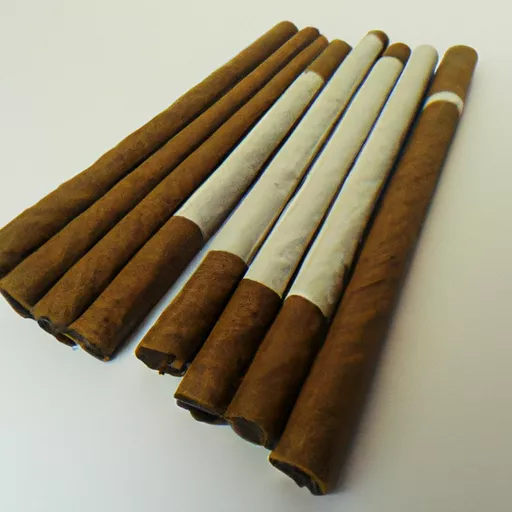
As a lover of cigars, I am always intrigued by the different types and flavors available. One type that has always caught my attention are little cigars. These miniature versions of traditional cigars have gained popularity in recent years, and for good reason. In this article, I will delve into the world of little cigars, exploring their history, composition, and the reasons behind their appeal.
First and foremost, let’s clarify what exactly a little cigar is. Little cigars, also known as cigarillos, are smaller versions of a regular cigar. While a cigar typically measures around 6 inches in length and has a ring gauge of 42-64, little cigars are shorter in length, ranging from 3 to 4 inches, and have a thinner ring gauge of 20-30. They are usually made with machine-rolled tobacco, as opposed to hand-rolled which is more common in traditional cigars.
Little cigars first originated in the 1970s when tobacco companies started selling them as a cheaper alternative to regular cigars. They were marketed as a quick and easy option for those who didn’t have the time to smoke a full cigar. However, over the years, little cigars have come to be recognized as a unique product in their own right, with their own dedicated market and loyal consumers.
One of the main draws of little cigars is their affordability. They are significantly cheaper than traditional cigars, making them accessible to a wider range of consumers. This is partly due to their smaller size and use of machine-rolled tobacco. However, don’t let their lower price tag fool you – little cigars can still offer a satisfying smoking experience.
Due to their smaller size, little cigars have a shorter smoking time compared to traditional cigars. This makes them a perfect option for those who want to enjoy a cigar, but without committing to a lengthy smoking session. Additionally, being machine-rolled, little cigars tend to burn more quickly, making them a great choice for a quick smoke break during a busy day.
One thing that sets little cigars apart is their diverse range of flavors. While traditional cigars are usually limited to natural and Maduro wrappers, little cigars come in a variety of flavors such as cherry, vanilla, chocolate, and more. These flavors add a unique twist to the smoking experience and can appeal to those who are not fans of the natural tobacco taste.
Moreover, little cigars are often seen as a milder alternative to traditional cigars. This is because they are made with a mix of tobacco leaves, resulting in a smoother and less intense smoke. This makes them a popular choice for beginner smokers who may find traditional cigars too strong.
Little cigars also offer convenience and portability. Their compact size makes them easy to carry around, and they come in handy when you want to enjoy a cigar while on the go. Additionally, many little cigars come in resealable packages, making them perfect for multiple smoking sessions without having to worry about the cigar going stale.
When it comes to the composition of little cigars, there are a few key differences from traditional cigars. As mentioned earlier, little cigars are machine-rolled, which means the tobacco leaves are tightly packed and held together by a homogenized wrapper. This is in contrast to traditional cigars, which are hand-rolled and use whole tobacco leaves as the wrapper.
Another difference is the use of filler tobacco. While traditional cigars typically use long filler tobacco, which is made up of whole tobacco leaves, little cigars often use short filler tobacco. This consists of smaller pieces of tobacco scraps that are leftover from the production of long filler cigars. This makes little cigars more affordable to produce and is one of the factors contributing to their lower price.
With all their unique qualities, it’s no surprise that little cigars have gained a dedicated fan base. However, like any other tobacco product, little cigars do come with health risks. While they may be milder in taste, they still contain nicotine and other harmful chemicals that can lead to addiction and health issues. It’s important to consume them in moderation and be aware of the potential risks.
In conclusion, little cigars offer a budget-friendly, convenient and flavorful alternative to traditional cigars. While they may not have the same prestige and complexity as their larger counterparts, little cigars have carved out their own space in the cigar world. From their interesting history to their unique composition and diverse flavors, there is a lot to discover and appreciate about these miniature wonders. Whether you’re a seasoned cigar aficionado or a beginner looking to try something new, little cigars are definitely worth a try.